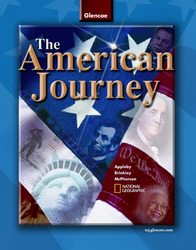The American Journey © 2007Chapter 29:
The Civil Rights EraWeb Lesson PlansIntroduction
In this chapter students read about the movement to ensure equal opportunity and equal treatment for all Americans. Many well-known heroes led the fight for civil rights—Martin Luther King, Jr., Thurgood Marshall, Rosa Parks. Others are not as well known but were also important in the fight for equality. The struggle for equal treatment for women is also part of the civil rights movement.
Lesson Description
In this lesson students will visit the National Women's History Project Web site. They will read about the second wave of the women's rights movement and answer several questions. Then they will write a script for a TV news story that includes an interview with an important women’s rights leader.
Instructional Objectives- The learner will be able to identify the contributions of significant individuals in the women's rights movement.
- The learner will be able to describe the impact of Title VII and Title IX on the women's rights movement.
- The learner will be able to write a script for a news story about the women's rights movement.
Student Web Activity Answers- Esther Peterson was the Director of the Women's Bureau of the Department of Labor. At her insistence President Kennedy appointed a commission to study the situation of women in the United States. The report documented discrimination against women in virtually every area of American life.
- Betty Friedan wrote The Feminine Mystique, which inspired thousands of women to look for fulfillment beyond the role of homemaker.
- It prohibited discrimination in employment on the basis of sex.
- It guaranteed equal access to education and athletics for women.
- Students' news stories and interviews may vary.
 | 




